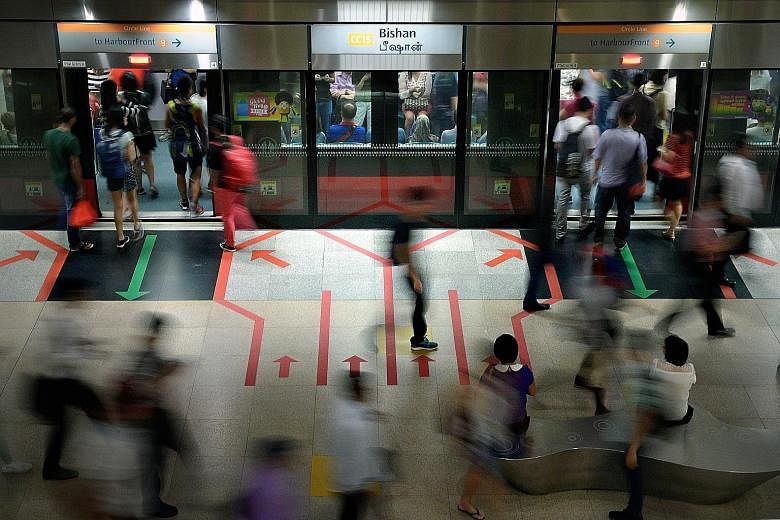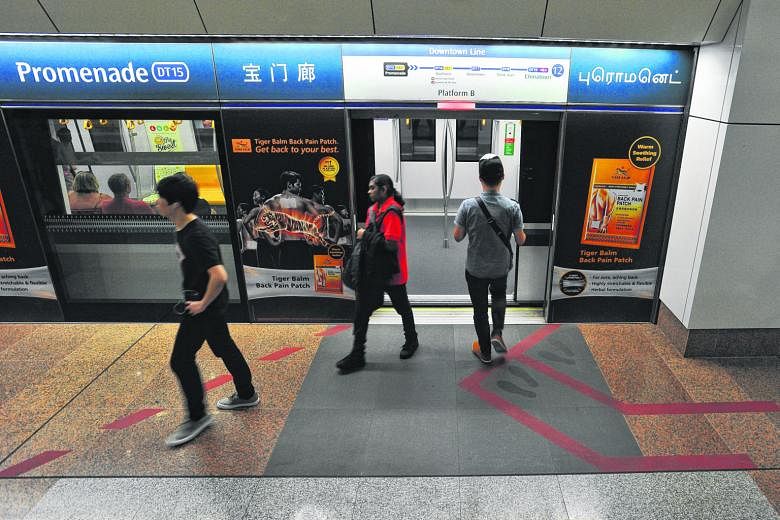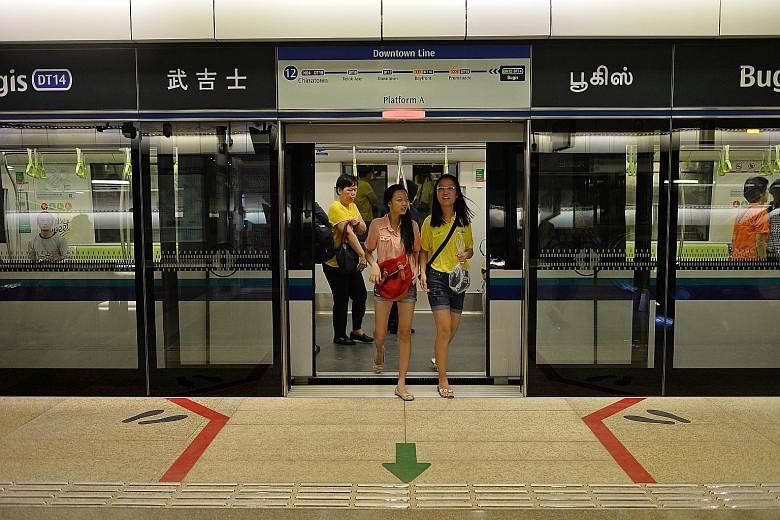If you take the train at Bishan, Buona Vista or Jurong East MRT stations, you might have noticed new queue markings to help commuters board the trains.
This is part of a new queue system that is being piloted at the three busy stations, to improve the flow of commuters boarding and alighting from trains during rush hour.
The three-month trial by operator SMRT started last month, The Straits Times has learnt. Red arrows and lanes are used to line commuters up in two rows at each side of the train door, while staying clear of alighting passengers.
Existing markings at most station platforms are not so detailed, employing a funnel shape to get people to keep away from the train doors.
The three stations, which are all interchanges, were chosen because of their high passenger volume during the peak hours.
SMRT vice-president for corporate information and communications Patrick Nathan said: "We are optimistic that the double queues will facilitate a smoother and safer transfer of commuters by reducing criss-crossing when they alight and board trains."
SMRT will be "observing commuter flow and obtaining feedback on its effectiveness", he said.
Metro systems in places such as Taipei and Tokyo also use queue lines to manage commuter flow.
Mr Gerald Giam, a former Non- Constituency MP who wrote a paper in 2008 suggesting queue lines similar to those in Tokyo be used here, said: "The lines guide passengers (on) where to queue and enable them to board trains on a first-arrived-first-enter basis, in contrast with the previous ambiguous markings."
He added: "I believe most passengers don't deliberately 'cut' queue, but without clear markings, they don't know who arrived first."
Full-time national serviceman Ong You Yuan, 23, president of train-spotting club SGTrains, is all for the lines: "Having a double queue is more orderly and will also improve the crowd situation."
The new pilot follows previous attempts to test new queue systems.
When the Downtown Line 1 (DTL1) opened in 2013, Telok Ayer and Promenade stations featured a set of queue lines drawn parallel to the platform screens, on just one side of the train door.
But these have apparently not been well received. The Land Transport Authority (LTA) called a tender last month to have the markings replaced by the funnel design used at the other four DTL1 stations. These have modified versions of the funnel design at other MRT lines, with markings spaced wider apart.
An LTA spokesman said: "Most of the commuters we surveyed indicated that they still prefer to queue on either side of the doorway."
When the second phase of the Downtown Line (DTL2) opens on Dec 27, platforms on the 12 stations will also adopt the same funnel design, said LTA.
In its tender, LTA also asked for funnel-type queue markings to be implemented at Bukit Panjang and Choa Chu Kang LRT stations, to encourage commuters to queue on both sides of the fixed screen opening. Signs stating "keep clear" will also be put up at train doorways.
When the DTL2 opens, LTA said the two stations are "anticipated to be the busiest" on the Bukit Panjang LRT network. Bukit Panjang is one of the interchange stations on the DTL2, connecting to the Central Business District and Marina Bay area.




